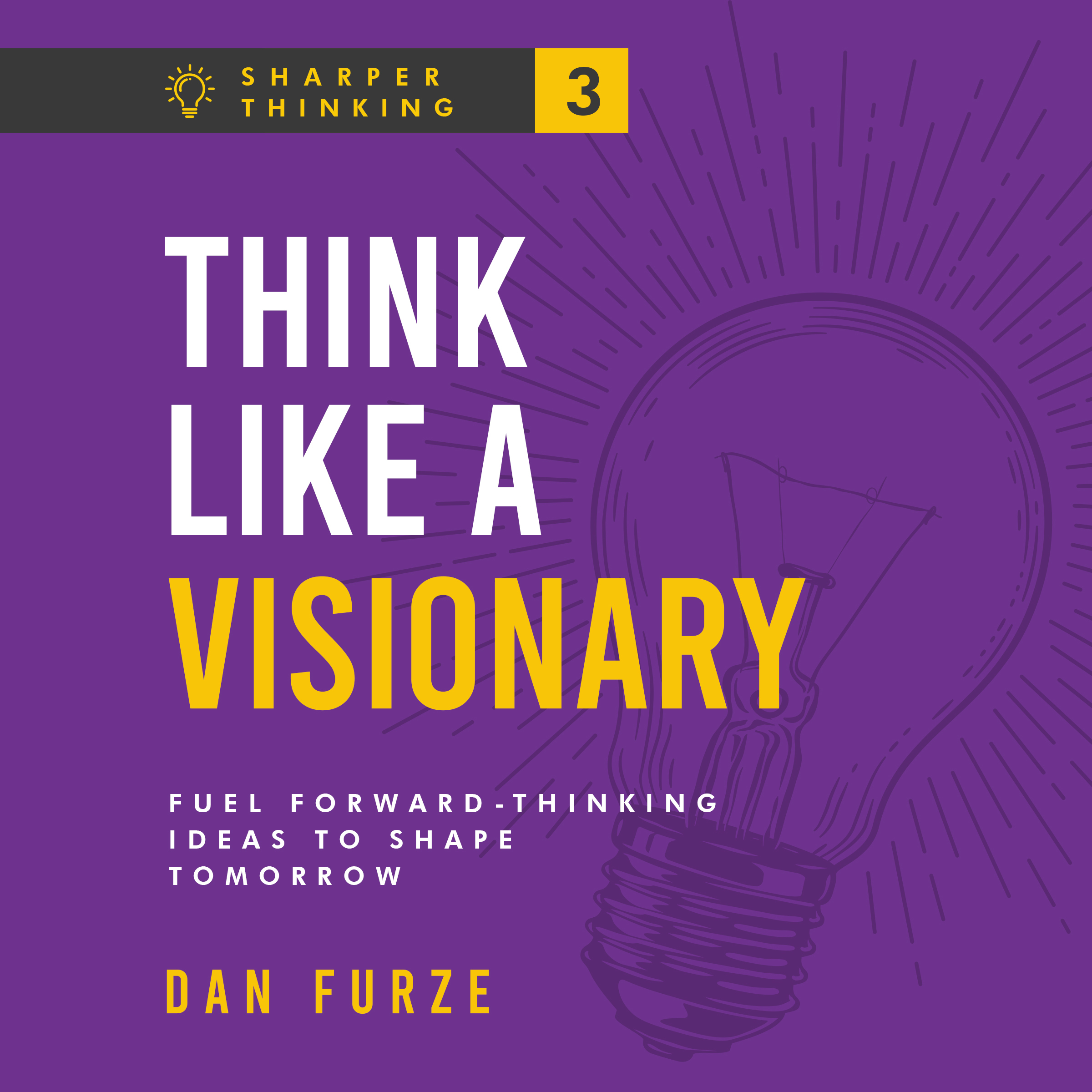
Think Like a Visionary –
The Complete Study Guide
Unlock Creativity, Imagination, and Long-Term Thinking
A companion guide to help you cultivate creative confidence and visionary thinking. Learn how to see beyond limitations, connect ideas across disciplines, and turn imagination into action.
Visionaries see what doesn’t exist yet — they connect the dots between dreams and direction. This guide helps you unlock your creative insight and turn ideas into impact.
This study guide gives you short, practical ways to apply skills from each chapter in your own life as you read through or listen to the book.
Work through one section at a time or dip into whichever area you want to strengthen.
1. Identifying Your Own Big Idea
- Choose a recurring problem you’ve noticed in your personal or professional life. Write it down and describe why solving it matters.
- Challenge yourself to think without limits — imagine how you’d solve this problem if there were no constraints of time, money, or technology.
- Break your bold idea into three small, practical actions you can take in the next 30 days to move it forward.
💭 What problems excite or frustrate you enough to spark your biggest ideas?
2. Developing Your Forward Mindset
- Reflect on your current focus — are your goals mostly short-term or long-term? Write one way to stretch your horizon.
- Choose a challenge and create three future scenarios: business-as-usual, disruption, and breakthrough success.
- Set one goal for 5–10 years from now and write three small steps you can take in the next month to move toward it.
- Identify an area where you usually chase quick wins. Take one action that focuses solely on long-term impact.
- Schedule 10 minutes daily for ‘future thinking’ — use this time to read, imagine, or plan ideas aligned with your vision.
💭 What would change in your decisions if you always thought five years ahead?
3. Turning Vision into Actionable Plans
- Revisit your long-term vision and break it into three major milestones that mark clear progress points.
- For each milestone, list the smaller, actionable tasks needed to achieve it — aim for clarity and specificity.
- Assign realistic timelines and deadlines to each task. Use these to build your roadmap.
- List two possible obstacles for each milestone and one backup plan for each.
- Schedule monthly reviews to adjust your roadmap, ensuring your plan evolves with new information.
💭 How can structure and discipline give your creative vision more power?
4. Practicing Disruptive Thinking
- Identify one assumption or norm in your field that most people never question.
- Write three bold ‘What if?’ questions that challenge this assumption and open new possibilities.
- Brainstorm three disruptive solutions that break away from the norm — be bold, not realistic.
- Pick one idea to test on a small scale — design a simple experiment, prototype, or pilot.
- Use feedback from your test to refine the idea and prepare for a larger rollout.
💭 When was the last time you questioned something ‘everyone’ assumed was true?
5. Building Collaborative Networks to Support Your Vision
- List the key skills or expertise your vision requires, and identify who has them within your circle or industry.
- Reach out to three potential collaborators and share your vision — ask for their input or ideas.
- Set regular check-ins or brainstorming sessions to keep collaboration alive.
- In your next group meeting, ask, ‘What are we missing?’ to encourage diverse perspectives.
- Write down three ways you can show appreciation or recognition to those supporting your vision.
💭 Who could help your vision grow faster — and how can you create space for them to contribute?
6. Future-Proofing Your Vision Through Continuous Learning
- Research and list three emerging trends in your industry that could shape the next 5–10 years.
- For each trend, note one potential opportunity and one possible threat to your current vision.
- Choose one trend and outline a small, specific action you could take to adapt your strategy.
- Identify three areas of knowledge you need to develop to stay ahead, and plan how you’ll learn them.
- Design a simple ‘experimentation framework’ to test new ideas before implementing them widely.
💭 How can curiosity and learning become your most powerful competitive advantages?
7. Reframing Setbacks as Opportunities for Growth
- Write about a recent setback — what happened, and how did it affect your goals?
- List the root causes of the setback, digging beyond surface explanations.
- Identify at least two growth opportunities or lessons the experience revealed.
- Create a plan to apply what you learned to future challenges — include both short- and long-term steps.
- Write a personal affirmation to remind yourself that failure is part of growth (e.g., ‘Every challenge brings me closer to clarity’).
💭 What would happen if you viewed every failure as a strategic data point instead of a defeat?
🧭 Final Takeaways
Visionary thinking is the bridge between imagination and impact. By combining creativity with structure, collaboration, and adaptability, you can bring ideas to life that shape the future. Keep questioning limits, refining your vision, and daring to see possibilities others overlook — your imagination is your greatest strategic asset.